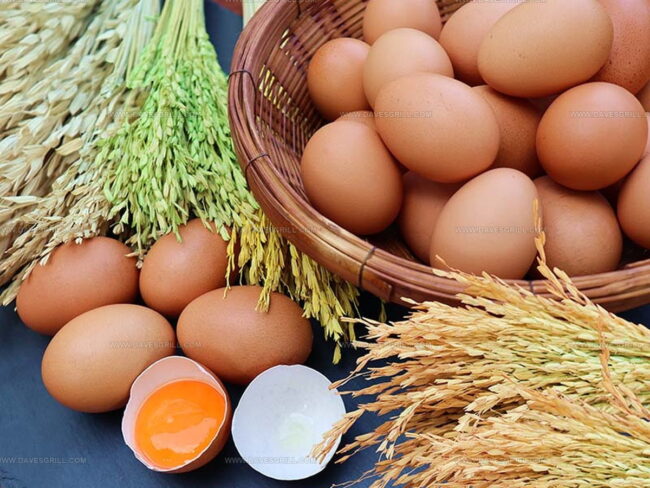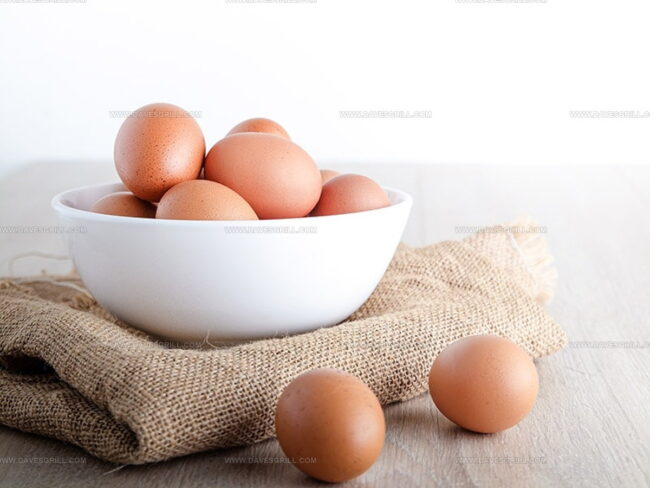10 Smart Substitutes for Eggs in Baking Recipes
What can I substitute for eggs in baking? This common kitchen question arises whenever supplies run low or dietary needs change.
Egg replacements have become increasingly popular among those following plant-based diets or dealing with allergies.
The perfect substitute depends largely on what function eggs serve in your specific recipe - binding, leavening, or adding moisture.
Many home bakers find themselves surprised by how well certain alternatives work in their favorite treats.
From simple pantry staples to specialized commercial products, the world of egg alternatives has expanded dramatically in recent years.
The science behind these substitutions helps explain why some options work better in cookies while others excel in cakes.
Keep reading to find the ideal egg replacement for your next baking project and learn the tricks professional bakers use when eggs aren't an option.
Egg Alternatives for Baking
Eggs being unavailable for baking can be resolved by working in another ingredient that binds the mix effectively. Everything else falls right into place afterward.
Almond Butter
Almond butter stands out as a versatile egg substitute in baking, perfectly binding ingredients while reducing fat content in your favorite treats.
Its mild taste won't overpower other flavors, making it ideal for cookies, brownies, and quick breads where the nutty undertones complement chocolate or spices beautifully.
Home cooks can easily make this substitute by processing almonds until smooth, though store-bought versions save time when you're in a hurry.
Peanut butter offers a budget-friendly alternative that performs similarly in recipes, just with a more distinctive flavor profile.
Flaxseeds
Flaxseeds serve as an excellent egg substitute in baking, mimicking the binding and moisturizing properties that eggs typically provide in recipes.
For each egg replacement, mix one tablespoon of ground flaxseed with three tablespoons of water and let it sit for five minutes until it develops a gel-like consistency similar to egg whites.
You can save time by grinding larger batches of flaxseeds ahead of time and storing them in the freezer for convenient use whenever needed.
The mild, nutty flavor that flaxseeds add works wonderfully in heartier baked goods like muffins, cookies, and quick breads.
Condensed Milk
Substituting eggs with condensed milk in baking offers a convenient alternative for many recipes, with just 3/4 cup replacing one egg perfectly.
This dairy product doesn't need refrigeration when unopened and comes in handy tube packaging similar to toothpaste for easy storage.
Making your own version at home is simple - just combine 2 cups of milk with one cup of sugar, heat until dissolved, then simmer before cooling.
Regular whisking prevents the mixture from bubbling over during the cooking process.
Once cooled, the homemade condensed milk works wonderfully in cakes, cookies, and other baked goods while providing a rich, sweet flavor that many people actually prefer to eggs.
Applesauce
Substitution plays a crucial role in baking with applesauce serving as a popular egg alternative that adds moisture to many recipes.
The results aren't always perfect though, since this swap works better in some baked goods than others and might affect both taste and texture in the final product.
Anyone with fruit allergies should exercise caution when using applesauce as a replacement ingredient.
For recipes calling for multiple eggs, reducing the applesauce amount by half or more typically yields better results.
Adding a binding agent like xanthan gum, guar gum, or psyllium husk alongside the applesauce helps maintain proper structure in your baked treats.
Chia Seeds
Chia seeds make an excellent egg substitute in many baked goods because of their remarkable absorbent properties.
For best results in cakes, cookies, and muffins, grind these nutritional powerhouses into a fine powder rather than using them as a paste.
The beauty of chia seeds lies in their neutral flavor, which blends seamlessly into recipes without altering the taste of your favorite treats.
Beyond baking, these versatile seeds can enhance smoothies, granola, and oatmeal, adding a significant nutritional boost without much effort.
Dairy-free bakers particularly appreciate chia seeds as a reliable alternative that performs well in recipes where traditional eggs might otherwise be missed.
Soy Lecithin
Soy lecithin, a yellowish-brown substance extracted from soybean oil, serves as an excellent plant-based alternative for those with egg allergies or anyone limiting animal products in their diet.
This natural emulsifier contains phospholipids that mimic the binding properties found in egg yolks, making it perfect for baking and cooking applications.
When substituting in recipes, just one tablespoon of soy lecithin can replace a single egg yolk, though it won't replicate the distinctive color or flavor that eggs provide.
The substitution works best in most standard recipes where eggs primarily function as binders rather than main flavor components.
Mashed Bananas
Mashed banana stands out as a popular egg substitute, though your baked goods might carry a subtle banana taste when using it.
Many home bakers prefer other fruit purées like pumpkin or avocado since they offer milder flavors while still maintaining moisture in recipes.
The general rule is to use 1/4 cup of any fruit purée for each egg called for in your recipe.
Treats made with these substitutes typically turn out wonderfully dense and moist, even if they don't brown as deeply as traditional egg-based recipes.
Tofu Silken
Substituting silken tofu for eggs in baking offers a practical solution for those avoiding animal products.
Tofu, essentially dehydrated soy milk pressed into solid blocks, varies in texture based on its water content, with silken tofu being the softest variety due to its high moisture level.
For egg replacement, about 60 grams of pureed silken tofu can effectively stand in for one egg in your recipe.
Many bakers prefer using this substitute in denser treats like brownies, cookies, quick breads, and cakes where its bland flavor won't compete with other ingredients.
Powdered Arrowroot
Arrowroot powder offers a fantastic egg substitute for bakers seeking plant-based alternatives, with its starchy composition derived from South American tuber plants.
Simply mixing 2 tablespoons of this fine powder with 3 tablespoons of water creates the perfect binding agent in recipes that would typically call for one egg.
Many people appreciate how this neutral-tasting powder performs similarly to cornstarch but with gentler thickening properties that work beautifully in sauces and desserts.
Health food stores commonly stock this versatile ingredient, making it accessible for anyone interested in egg-free cooking options.
Gelatin Or Agar-Agar
Gelatin serves as an excellent egg substitute in many recipes, derived from the collagen of pigs and cows when a gelling agent is needed.
For those avoiding animal products, agar-agar made from seaweed offers a plant-based alternative with similar properties.
Both substitutes can be found in powder form at most grocery stores and health food shops, making them easily accessible.
The standard replacement ratio is 1 tablespoon of unflavored gelatin dissolved in cold water, then mixed with boiling water until frothy, which effectively replaces one egg in recipes.
These substitutions generally won't change the flavor of your dishes, though they might create a slightly firmer texture than eggs would provide.
Common Baking Recipes That Require Egg Substitutes
Baking without eggs is more common than you think, and many classic recipes turn out just as tasty with simple substitutes:
Flavor Adjustments When Baking Without Eggs
Baking without eggs can change the flavor and texture of your treats, but small adjustments will help you keep everything delicious and satisfying:
Choose the Right Substitute
Each egg replacement, like applesauce, banana, or yogurt, has its own flavor, so pick the one that matches your recipe best. Applesauce is mild, banana adds sweetness, yogurt brings tang.
Increase Spices or Vanilla
Egg-free baked goods can taste flat; boost flavor with extra cinnamon, nutmeg, vanilla extract, or more cocoa or citrus zest.
Adjust Sweetness
Mashed banana or applesauce are naturally sweet, so reduce the sugar in your recipe to keep flavors balanced.
Add a Pinch of Salt
A tiny bit of salt helps bring out flavors in egg-free batters, especially if your substitute is sweet.
Watch for Extra Moisture
Fruit purees or yogurt add moisture, so bake a little longer to avoid soggy centers, or add a spoonful of flour to thicken the batter.
Boost Umami
For savory bakes, add nutritional yeast or smoked paprika to bring depth and a satisfying finish.
Egg-Free Baking: Answers to Your Top Substitute Questions
1. How much substitute should I use per egg?
Generally, use 1/4 cup applesauce or mashed banana, 1 tablespoon flaxseed or chia seed mixed with 3 tablespoons water, or 1/4 cup yogurt per egg.
2. Are there substitutes that work for both binding and leavening?
Commercial egg replacers, flaxseed meal, and chia seeds help bind and add some lift, but you may need to add extra baking powder for more rise.
3. Can I make egg-free baked goods vegan?
Yes, use plant-based substitutes like applesauce, flaxseed, chia seed, or tofu, and ensure all other ingredients are vegan-friendly.
4. Will using egg substitutes affect the flavor of my recipe?
Some options like banana or tofu can add subtle flavor, while neutral choices like applesauce or commercial replacers are less noticeable.
5. Can I use egg substitutes in all types of baked goods?
Most substitutes work well in cakes, muffins, and cookies, but may not perform as well in recipes needing a lot of lift, like soufflés.
6. Are egg substitutes safe for people with egg allergies?
Yes, all plant-based and dairy alternatives are safe for those with egg allergies, but always check labels for cross-contamination.
7. Do egg substitutes change the color of baked goods?
Some, like banana or flaxseed, may make baked goods slightly darker or add specks, but the difference is usually minor.




Dave Mitchell
Founder & Chief Recipe Developer
Expertise
Education
Asheville-Buncombe Technical Community College
Associate of Applied Science in Culinary Arts
Focus: Comprehensive training in culinary techniques, kitchen management, and menu planning, with a special emphasis on grilling and outdoor cooking.
Dave Mitchell is the heart behind Daves Grill, a cook, writer, and lover of all things grilled. He studied Culinary Arts at Asheville-Buncombe Technical Community College and spent years cooking, testing, and sharing recipes that actually work.
Dave started Daves Grill to keep things simple: one great recipe at a time. His food is bold, easy to follow, and made for real people with regular kitchens. From juicy steaks to quick sides, Dave’s recipes bring the heat without the hassle.